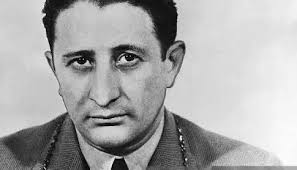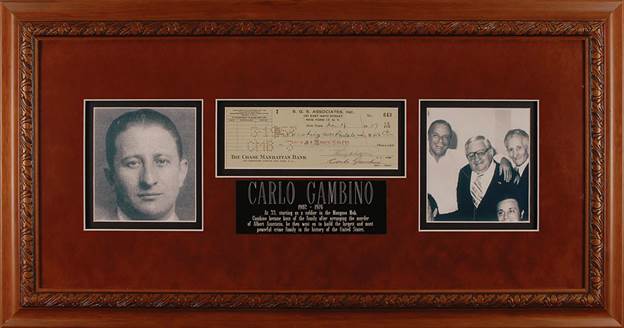Carlo Gambino is one of the most legendary names in organized crime history. Known as the head of the Gambino crime family, one of the “Five Families” that dominated New York’s Mafia world, Gambino ruled the underworld with a quiet yet iron grip for decades. Unlike flashy mobsters, Gambino preferred to stay low-key, avoiding unnecessary attention while building one of the most powerful criminal organizations in the United States.
At the time of his death in 1976, Carlo Gambino’s net worth was estimated at around $400 million (over $2 billion in today’s money when adjusted for inflation). His fortune came from decades of organized crime activities, making him one of the richest and most influential mob bosses in American history.

Early Life
Carlo Gambino was born on August 24, 1902, in Palermo, Sicily, Italy, into a family with strong ties to the Mafia. Growing up, he was exposed early to the traditions and operations of the Sicilian underworld.
He arrived during a time when Italian immigrants were struggling in New York, and many turned to organized crime as a means of survival and power. He quickly joined the ranks of the American Mafia and began his climb within the organization.
Rise in the Mafia World
By the 1930s, Gambino had already established himself as a capable mobster. He became closely associated with Lucky Luciano and Albert Anastasia, two of the most powerful mob figures of their time.
- In 1957, after Anastasia’s assassination, Gambino assumed control of the family that would later bear his name — the Gambino crime family.
- Under his leadership, the Gambino family became the largest and most profitable of New York’s Five Families, overseeing racketeering, gambling, loan sharking, construction, trucking, and labor unions.
Gambino earned the nickname “The Godfather” because of his immense power and influence not only in New York but across the United States.

How Carlo Gambino Made His Fortune
Carlo Gambino’s estimated $400 million net worth came from various illegal enterprises, many of which were run through legitimate businesses to conceal profits.
Key sources of wealth included:
- Labor Unions: Gambino controlled unions like the International Longshoremen’s Association, which gave him influence over shipping and ports.
- Construction and Trucking: His family’s infiltration of construction companies allowed them to win lucrative contracts.
- Gambling Operations: From casinos to underground betting rings, gambling was a huge revenue stream.
- Loan Sharking & Extortion: Gambino’s crew made millions through high-interest loans and protection rackets.
- Narcotics Trade: Though Gambino himself publicly opposed large-scale drug trafficking, some members of his organization were involved in narcotics, indirectly adding to the family’s fortune.
A Different Kind of Mob Boss
Unlike figures such as John Gotti (who came later and craved the spotlight), Carlo Gambino was low-profile and strategic.
- He rarely appeared in public without a purpose.
- He dressed simply and lived in a modest home in Brooklyn, avoiding flashy displays of wealth.
- His discretion made it difficult for law enforcement to pin major charges on him, earning him the reputation of being “untouchable.”
This quiet style allowed him to rule for nearly two decades without ever serving significant prison time.
Net Worth at His Peak
By the time of his death in 1976, Carlo Gambino’s net worth was estimated at $400 million. Adjusted for inflation, that figure would be over $2 billion today, making him wealthier than many modern Fortune 500 CEOs.
Much of this wealth was hidden through front businesses, offshore accounts, and assets under the names of family members and associates.
Death and Succession
Carlo Gambino died of a heart attack on October 15, 1976, at his Long Island home at the age of 74. His funeral drew thousands of mourners, including mobsters, businessmen, and politicians, reflecting his far-reaching influence.
Before his death, Gambino named his brother-in-law Paul Castellano as his successor, which later led to internal conflicts and Castellano’s assassination in 1985 — paving the way for John Gotti’s rise to power.
Legacy and Cultural Impact
Carlo Gambino’s influence continues to resonate:
- The Gambino crime family remains one of the most well-known Mafia organizations in the world.
- His leadership style is often studied as an example of how discretion and discipline can prolong power in organized crime.
- Pop culture has drawn inspiration from his life, with elements of his story reflected in films like The Godfather and TV shows like The Sopranos.
Final Thoughts
Carlo Gambino’s net worth of $400 million at the time of his death represents more than just wealth — it symbolizes the vast reach of organized crime in 20th-century America. Unlike many mobsters who craved attention, Gambino maintained his empire by staying in the shadows, quietly amassing one of the greatest fortunes ever linked to the Mafia.
Even decades later, his name is synonymous with power, wealth, and the hidden hand of organized crime in New York.

